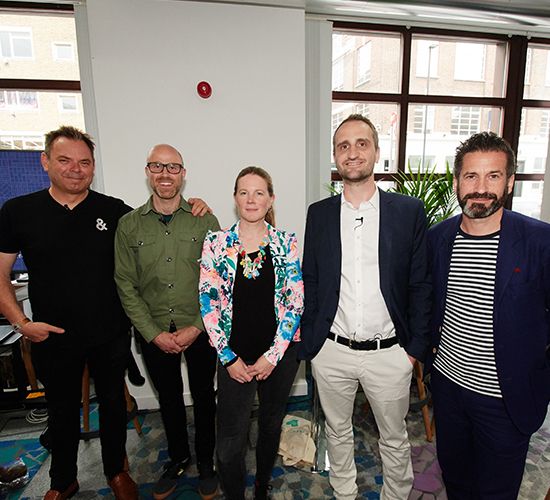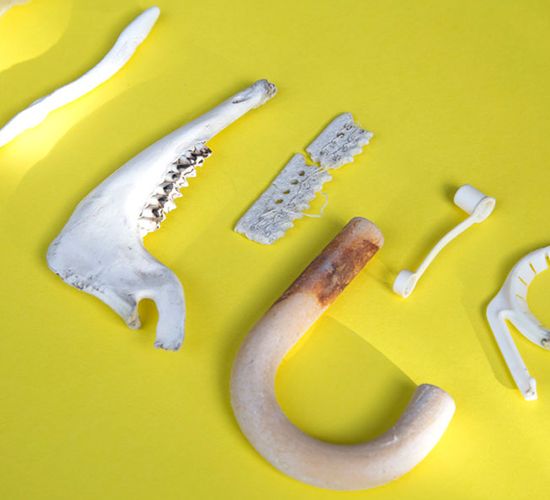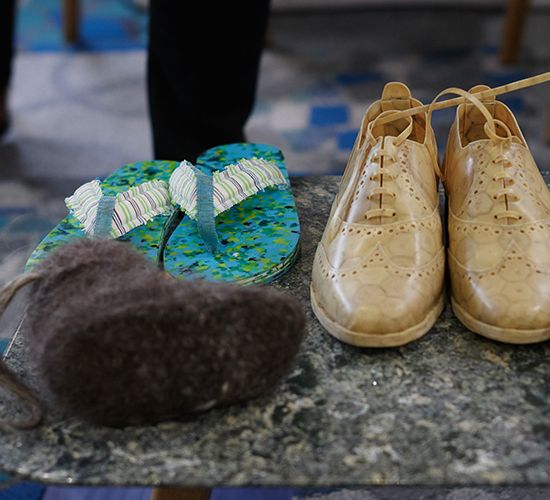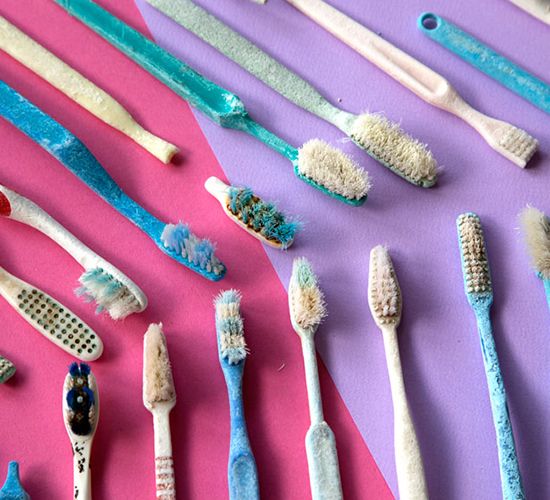Creating new products to meet customer demand does not have to be at the expense of raw materials. By revaluing existing materials and exploring design options using items that others consider to be waste, business can protect its long-term future.
At Interface 58% of our global raw materials are currently recycled or bio-based. We’ve been able to use recycled PVB from windscreens and we’re addressing ocean plastics through collaborative partnerships. One of our recent breakthroughs was launching a high performance carpet tile backing, CircuitBac Green, which uses a mix of bioplastics and mineral filler to create a carbon negative alternative to other available backings. Through decreasing a business’s reliance on ‘new’ raw materials and harnessing the value of re-use, new products with a wide range of benefits can be created.
To discuss the ideas behind ‘trash to treasure’ we convened a group of experts to share their stories. Here are some outtakes:
The chewing gum bin and the flip flops
Nick Gant, Design Researcher at Brighton University, brought to life the story behind a chewing gum bin made by one of his graduates. It not only looked like a chewing gum bubble but was also made from recycled gum. By taking a material, re-using it and putting it back into the context of where it came from you can create a circular vision for use.
Similarly, Nick created a pair of flip flops with the marine conservation society using single-use plastics collected from UK beaches.
A hard chair made from sheep’s wool
Justin Floyd, Co-Founder, Solid Wool Ltd, is dedicated to creating purpose from material that has lost its value. Sheep’s wool is commonly associated with being a skin irritant. By adjusting the properties of sheep’s wool Justin has made a fibre glass material which was recently converted into a hard chair.
The colour of waste material
By focusing on the aesthetics of waste material, Sophie Thomas, Founding Director of Thomas.Matthews Ltd, has envisioned a new relationship with colour. Through the use of recycled plastics, Sophie creates new products including scarves. Noting the value of the waste hierarchy: Reduction, reusability, then recycling, Sophie explored the idea that it’s critical designers think about designing for end of life.
Watch Nick, Justin, Sophie and I in action alongside Architect and Design Expert, Oliver Heath here.
Are you creating beautiful products out of waste? We want to know. Tweet us your thoughts @InterfaceInc




